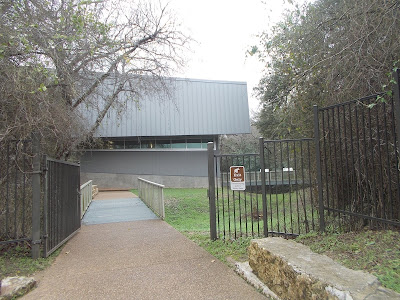I'm going to be honest. If Waco Mammoth is of national significance, so are Ashfall Fossils State Park in Nebraska and Mastodon State Historic Site in Missouri (and no doubt a plethora of other local and state parks and historic sites across the country). In fact, from what I've seen and read both of those parks are more significant in terms of species diversity and regional history. Ashfall preserves what can only be described as a shitload of mammal fossils, the whole range of animals wandering the Great Plains during the Ice Age. I haven't been there (yet), but the descriptions are pretty amazing. Mastodon also has variety, although the major focus is on mastodons because that was the most dramatic find. Mastodon also has human history -- mastodon and other bones date from a fairly recent time period, a mere 11,000 or so years ago, so the site includes evidence of human hunting activity.
It is an interesting exhibit, and I have no doubt it is an important site in terms of paleontology. According to the interpretive ranger, the nursery herd is the only one ever found. What exactly killed sixteen mammoths simultaneously -- flash flood? mud slide? -- isn't known, but it certainly gave paleontologists a lot of material to work with. The fact more bones were found of animals that died thousands of years later suggests this particular location may have been periodically rather treacherous, which in turn suggests that if the dig is continued more bones will surface. A paleontologist has been added to the NPS staff so excavations will continue at the usual snail's pace -- trowels, small brushes, and lots and lots of patience make a dig in progress an excruciatingly boring process to observe -- and more good stuff may be found.
Waco Mammoth is, incidentally, one of those places that illustrates why when a member of the public approaches an expert and says "I don't know what this is but it might be important" it pays to look at the mystery object. The original discovery was made by two male teenagers hunting for arrowheads along the bank of a creek that feeds into the Brazos River. They spotted an unusually large bone sticking out of the dirt, knew it wasn't from a cow, and took it to Baylor. The university set up a dig. Sixteen mammoths later they thought they were done. They were also running out of storage space.
 |
| Exterior view of the Dig Shelter |



No comments:
Post a Comment
My space, my rules: play nice and keep it on topic.